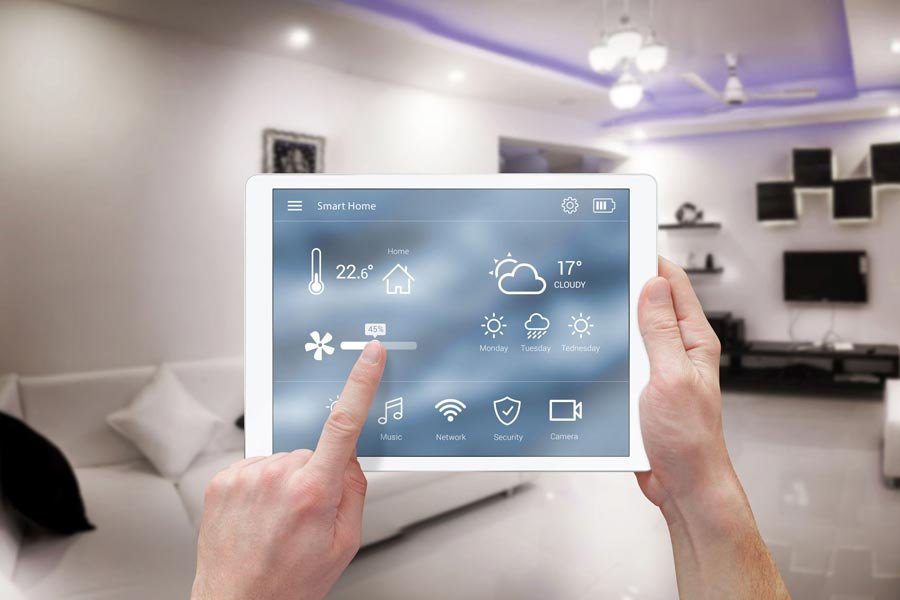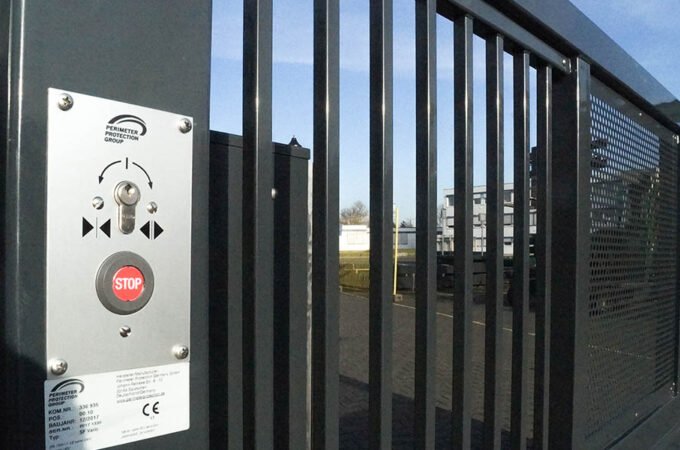
How Smart Technology Is Redefining Home Security
Table of Contents
ToggleKey Takeaways
- Smart home technology integrates advanced tools like wireless cameras and smart locks to enhance security.
- Features such as remote access, real-time alerts, and home automation provide a seamless way to manage household security.
- Upgrading to smart systems offers benefits like enhanced protection, convenience, and potential cost savings through lower insurance premiums.
- Smart systems improve overall safety by integrating smoke detectors, carbon monoxide alerts, and automated lighting solutions.
- Future trends include AI-based surveillance, facial recognition, and advanced cloud storage, shaping the next generation of household security systems.
Upgrading to a smart home security setup provides enhanced control and creates a comprehensive network that works together to deter threats and notify you instantly about suspicious activities. The transformation goes hand-in-hand with a growing trend of automating more aspects of daily life—from adjusting lighting and climate control to managing entire appliance suites. With real-time alerts, integration with professional monitoring, and increased user control, smart home security enhances your peace of mind while streamlining daily routines and simplifying how you interact with your home’s protective infrastructure. The knowledge that your security system adapts to your life, learns your patterns, and actively defends against both traditional and cyber threats makes upgrading an easy decision for many homeowners looking for lasting security, value, and simplicity.
Smart technology has revolutionized home security, offering homeowners more than traditional locks and alarms. In today’s connected world, security systems are no longer static tools mounted to doors and windows. Instead, they are dynamic networks with valuable features like live streaming, cloud recording, and AI-powered threat detection. This transformation means that safety, convenience, and peace of mind are seamlessly interwoven through intelligent devices and interconnected systems. Whether you’re keeping an eye on your property from miles away or setting up personalized access controls for family and visitors, the latest smart home security solutions put the power of protection directly in your hands. For those looking to optimize safety, integrating professional alarm monitoring services with smart home security systems can further strengthen overall protection—letting you rest easy whether you’re home or away, knowing help is just moments away if needed.
Evolution of Home Security
Traditional home security relied heavily on deadbolt locks, basic alarm systems, and manual monitoring. For decades, these setups offered only limited deterrence against intruders, relying on noise or a visible lock to discourage intrusion. Over the last decade, rapid technological advancements have transformed these simple solutions into intelligent networks capable of real-time monitoring, instant communication, and remote control. The rise of the smart home has made it easier for property owners to access live surveillance feeds at any time, control entry points from anywhere in the world, and integrate with other security services, such as fire and emergency medical response, for enhanced protection. The convenience of smart apps means that even when you travel, your security presence remains constant, increasing your confidence and comfort level. The adoption of smart home security systems has grown yearly as consumers recognize the power of advanced solutions to protect what matters most. As risks become more complex, these comprehensive systems quickly become the standard for households everywhere.
Key Components of Smart Home Security
A modern smart home security system consists of interconnected tools designed to address specific vulnerabilities and enhance peace of mind. Core components include smart cameras, smart locks, motion, and environmental sensors. Smart cameras offer continuous high-definition surveillance and cloud or local recording, with features like night vision, AI-powered motion detection, and two-way communication. Smart locks provide keyless entry solutions, unique PIN codes, Bluetooth connectivity, and biometric identification. Motion sensors detect subtle movement, trigger alarms or mobile alerts, and integrate with cameras for rapid visual verification. Environmental sensors monitor risks like smoke, carbon monoxide leaks, and water damage, preventing disasters and minimizing property loss or harm to loved ones. These devices are typically managed through a centralized app, allowing homeowners to monitor and control their system remotely from smartphones or tablets. Real-time alerts ensure immediate awareness of any suspicious activity or environmental threat, enabling quick action. Many systems are compatible with virtual assistants, enabling voice-activated control and seamless integration with other smart home devices. Scheduled routines and automation features, such as locking doors or arming the system at night, further enhance convenience and security. Additionally, modern systems often offer customizable settings to tailor protection levels to each household’s specific needs and routines.
Benefits of Smart Home Security Systems
Smart home security systems offer numerous benefits for homeowners, renters, and small businesses. These systems integrate artificial intelligence, live alerts, real-time video monitoring, and remote capability, providing enhanced protection and convenience. Users can access and manage their entire security setup from a single app interface, allowing them to check in, arm or disarm, and adjust settings from anywhere. Insurance companies often offer reduced premiums for customers who actively secure their property, reducing the risk associated with smart security systems. Real-time monitoring allows for fast response to suspicious behavior, environmental hazards, or emergencies, preventing loss or minimizing damage during critical incidents.
Additionally, many systems now include environmental sensors to detect smoke, carbon monoxide, or flooding, further improving household safety. Some models integrate seamlessly with smart locks and lighting, creating a fully automated security environment. Voice assistant compatibility enhances usability, offering hands-free control. Activity logs help users track who enters or exits their property and when. Overall, these systems combine security, convenience, and cost savings in one connected solution.
Integration with Other Smart Home Devices
The true power of smart home technology lies in its integration and synergy with other connected devices. Security systems today are designed to work seamlessly alongside products such as automated lights, smart thermostats, and voice assistants, forming an environment where security measures can be customized and activated automatically based on your habits, routines, or even geolocation data. For example, smart lighting might turn on and off at random intervals while you’re away to mimic occupancy, deterring would-be intruders. Smart thermostats can adjust temperatures to reduce energy waste or help prevent frozen pipes in winter by boosting warmth when the house is empty. This synergy streamlines protection and brings significant benefits in energy savings, convenience, and general home management, making modern security systems a key part of an efficient, intuitive household.
Beyond safety and efficiency, these integrated systems also provide valuable real-time insights. Homeowners can receive instant alerts if doors are left unlocked or windows are opened unexpectedly. Some systems include surveillance cameras that allow remote monitoring through a mobile device. Voice commands can arm or disarm systems without touching a panel. Scheduled automation lets you lock doors at the same time every night or turn off lights after everyone leaves. Integration with emergency services means help can be dispatched faster in critical situations. As smart home ecosystems grow more advanced, they offer increasingly personalized and proactive security solutions tailored to individual lifestyles.
Addressing Privacy and Security Concerns
With the proliferation of connected devices comes the increased risk of cyber threats and potential data breaches. Homeowners must prioritize cybersecurity best practices to maintain their privacy and avoid common pitfalls. These practices include creating unique, robust passwords for each device, enabling two-factor authentication wherever possible, regularly updating device firmware, and using strong network encryption standards such as WPA3 for your Wi-Fi. It is also crucial to read privacy policies closely and understand how device data is collected, stored, shared, and potentially monetized. Some systems offer advanced options for local storage or encrypted cloud storage, which can add an extra layer of protection. Addressing these privacy and security issues head-on ensures that the benefits of smart security can be fully enjoyed without sacrificing the safety and confidentiality of your personal or family information.
Future Trends in Smart Home Security
The future of smart home security is set to see significant advancements due to the evolution of artificial intelligence and IoT technologies. Next-generation systems will feature AI-driven surveillance, facial recognition, encrypted cloud storage, and advanced environmental sensors. Security cameras will use advanced artificial intelligence to recognize unusual activity, identify familiar faces, and distinguish harmless events from genuine threats. Advanced facial identification will improve access control and logs of who enters and exits, ensuring better tracking of household access. Cloud storage will provide reliable surveillance footage archives, while advanced environmental sensors will detect a broader range of dangers, making homes safer from human threats and natural disasters. This continuous improvement in system intelligence will enable personalized, automated responses, paving the way for a new era of home safety and peace of mind.
Lynn Place is Vice President of Marketing for SolvChem Custom Packaging Division. She has 30 years of professional experience in the manufacturing industry and specializes in consumer packaged goods, new product development and strategic planning.






